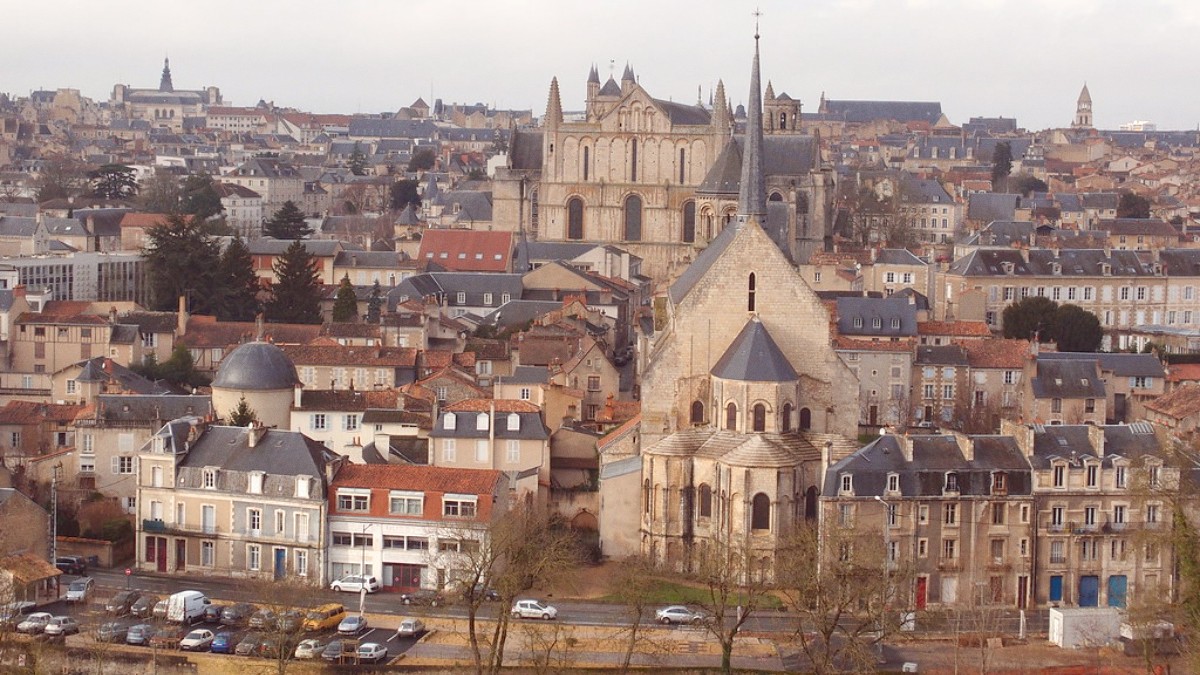
Southwestern France, France
Poitevin food character of rural French traditions. It draws heavily on the region's agricultural abundance, focusing on fresh, local produce.
It emphasizes fresh vegetables, local meats (notably pork and freshwater fish), and, notably, goat cheese. This cuisine tends to be hearty and comforting, often using more oil than butter- and cream-heavy cooking found in northern France. Its roots lie in resourceful, farm-to-table practices, making use of what the fertile plains and rivers include.
The broader Poitou region has specific culinary claims. Poitiers, being its capital, these specialties widely. You will find "broyé du Poitou", "farci poitevin", and "tourteau fromagé".
French meal times generally later. Breakfast (petit-déjeuner) is light (7:00-9:00). Lunch (déjeuner) is the main meal (12:00-14:00). Dinner (dîner) is later (19:00-22:00).
Always say "Bonjour" when entering a place. Keep hands on the table while dining. Bread placed directly on the table. Service charge almost always included in the bill. Additional tipping for truly exceptional service.
A large, circular, buttery shortbread cookie. Its name "broyé" "broken," as tradition dictates you break off pieces to share. It a slightly coarse texture and a rich butter flavor.
Find it in local bakeries (boulangeries) and patisseries.
A savory green pâté. It various greens, like cabbage, sorrel, and spinach, with bacon, herbs, and sometimes other vegetables. Typically pressed, cooked, and served cold in slices, often as a starter with bread.
You will find it in traditional restaurants and at local markets.
A unique regional cheesecake. It made with fresh goat cheese and a distinctive black, burnt-looking crust. Inside, the cheese filling is light, fluffy, and white. It a sweet and tangy taste.
Available in patisseries and some bakeries.
For quick and affordable bites, look for crêpes (both sweet and savory galettes) from local vendors.
Jambon-beurre (ham and butter) sandwiches from local bakeries are a simple, delicious choice.
Poitiers a selection of higher-end restaurants that fine French and regional cuisine. These establishments often focus on seasonal ingredients and meticulous presentation.
This category abundant in the city center. These restaurants traditional French cuisine, regional specialties, and often some international dishes.
Les Halles de Poitiers, the covered market, a fantastic array of fresh local produce, artisan cheeses, quality meats, seafood, and prepared dishes.
Your best bet for affordable and delicious meals. Purchase fresh bread, croissants, quiches, and sandwiches.
Ideal for quick breakfasts and lunches.
Dedicated crêpe restaurants both savory galettes and sweet crêpes. Many cafes simple lunch options.
Good for a casual meal or snack.
Pasta, pizza, and more.
Chinese, Vietnamese, Japanese.
Tagines and couscous.
From a diverse student population.
Awareness of gluten-free (sans gluten) and other allergens growing in France. Communicate your needs clearly.
Learning French phrases related to your diet recommended.
For severe allergies, carry a translation card in French that lists your specific dietary restrictions.
Apps like HappyCow locate vegetarian and vegan restaurants.
In the surrounding countryside, visit local farms, specifically Chèvreries (goat cheese farms) that produce Chabichou du Poitou. Some tours and tastings.
Poitiers and the wider region host various food markets and seasonal festivals throughout the year (e.g., truffle markets, harvest festivals).
When dining, if a restaurant busy, wait for the staff to seat you rather than choosing a table yourself.
Simple courtesies like greeting staff upon entering and thanking them when leaving a positive dining experience.
Don't hesitate to venture beyond main streets to find hidden local restaurants or cafes for an authentic taste.
Many older, historic buildings may have steps or narrow doorways. Newer establishments are more likely to offer full accessibility.
Call ahead to confirm accessibility for specific venues.
In France, small, well-behaved dogs often inside restaurants, especially in cafes or brasseries. Always ask first.
Look for a "Chiens Admis" (dogs allowed) sign.
Check local tourism calendars for seasonal food markets and festivals. These a chance to taste produce directly from farmers.
A cultural festival that sometimes music, theater, and street performances with local food vendors.
Specific fairs for local products like truffles (in winter) or chestnuts. A taste of regional specialties.
When dining, if a restaurant busy, wait for the staff to seat you rather than choosing a table yourself. A simple "Bonjour, une table pour deux s'il vous plaît" (Hello, a table for two please) good manners.